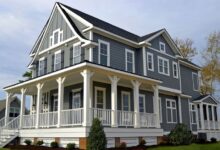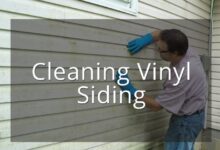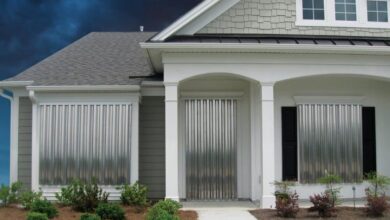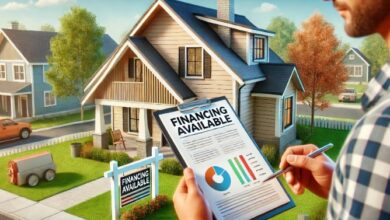Siding is an essential part of your home, providing both aesthetic appeal and protection against the elements. If you’re planning to install new siding, you might be wondering, “How much does siding cost?” In this article, we’ll dive deep into siding costs, the benefits of different materials, and product recommendations that can help you make the best decision for your home. We’ll also guide you on how to buy siding and provide real-world examples, so you can make an informed purchase. Let’s get started!
Understanding the Cost of Siding
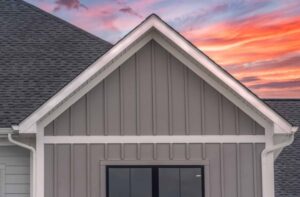
The cost of siding depends on several factors, including the material you choose, the size of your home, labor costs, and any additional features or installation requirements. Here’s a general breakdown of siding costs based on material:
- Vinyl Siding – $2 to $7 per square foot
- Wood Siding – $5 to $10 per square foot
- Fiber Cement Siding – $6 to $13 per square foot
- Metal Siding – $3 to $12 per square foot
- Stone or Brick Siding – $10 to $30 per square foot
Each material offers different benefits, which we’ll cover below. Understanding the cost per square foot is important, but so is evaluating which type of siding best fits your needs.
Benefits of Different Siding Materials
1. Vinyl Siding – Affordable and Low Maintenance
Vinyl siding is the most popular choice for homeowners due to its affordability, easy maintenance, and variety of styles.
Benefits:
- Low Maintenance: Unlike wood, vinyl doesn’t need to be painted or stained regularly. It’s resistant to rot and insects.
- Energy Efficiency: Some vinyl sidings are designed to be insulated, reducing energy bills.
- Color Variety: Available in many colors and finishes, offering flexibility for aesthetic preferences.
2. Wood Siding – Natural Look & Durability
Wood siding offers a natural aesthetic and is a great option for homeowners who want a more traditional or rustic look.
Benefits:
- Timeless Appeal: Wood adds a classic look and enhances curb appeal.
- Customizable: Can be painted or stained in any color to suit your style.
- Insulation: Wood offers natural insulation properties.
3. Fiber Cement Siding – Durable and Fire-Resistant
Fiber cement siding is known for its durability, fire resistance, and versatility. It can mimic the look of wood, stone, or stucco.
Benefits:
- Fire-Resistant: Unlike wood, fiber cement won’t catch fire easily.
- Long-Lasting: It is resistant to rotting, insects, and extreme weather conditions.
- Low Maintenance: Requires minimal upkeep compared to other materials.
4. Metal Siding – Modern & Low-Maintenance
Metal siding is perfect for homeowners looking for a modern and sleek look. It’s commonly made from steel or aluminum.
Benefits:
- Low Maintenance: Does not require frequent repairs or repainting.
- Energy Efficient: Reflects heat, reducing cooling costs.
- Sustainability: Metal is a recyclable material, making it an eco-friendly option.
5. Stone or Brick Siding – High-End & Timeless
Stone or brick siding offers elegance and lasting beauty. It’s more expensive, but it’s incredibly durable and adds significant value to your home.
Benefits:
- Durability: Stone and brick are incredibly long-lasting and can endure extreme weather.
- Low Maintenance: Requires very little upkeep compared to other materials.
- Value: Stone or brick adds value to your property.
Top 5 Siding Products to Consider
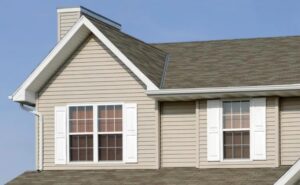
If you’re considering installing siding, here are 5 top-rated products you should look into. These are tried and tested options based on quality, price, and customer satisfaction.
1. CertainTeed Vinyl Siding
Use Case: Best for homeowners looking for affordable, low-maintenance siding.
- Price: $2.50 – $7 per square foot
- Pros:
- Wide range of colors and styles
- Low maintenance
- Energy efficient with insulated options
- Cons:
- Can fade over time
- Susceptible to cracking in extreme weather
- Features:
- Insulated panels
- Long-lasting color with fade-resistant technology
- Easy installation
2. James Hardie Fiber Cement Siding
Use Case: Ideal for homeowners wanting a durable, low-maintenance, fire-resistant material.
- Price: $6 to $13 per square foot
- Pros:
- Resistant to rot, insects, and fire
- Versatile, can mimic wood or stucco
- Long-lasting
- Cons:
- Higher installation costs
- Requires painting every 10-15 years
- Features:
- Non-combustible
- Comes in a variety of textures and finishes
- 30-year warranty
3. LP SmartSide Wood Siding
Use Case: Perfect for homeowners looking for the natural beauty of wood with the durability of modern technology.
- Price: $4 to $8 per square foot
- Pros:
- Resistant to termites and rot
- Offers the natural wood look
- Can be painted or stained to your preference
- Cons:
- Higher upfront cost
- Needs regular painting to maintain appearance
- Features:
- Treated with advanced technology to resist weather and pests
- Easy to install
- Eco-friendly options available
4. Alside Prodigy Vinyl Siding
Use Case: For those looking for a high-efficiency, low-maintenance siding solution.
- Price: $4 to $8 per square foot
- Pros:
- Enhanced energy efficiency with foam-backed insulation
- Durable and weather-resistant
- Easy to maintain
- Cons:
- Limited color choices
- Can be prone to scratching
- Features:
- Insulated to provide superior energy savings
- Fade-resistant colors
- Strong impact resistance
5. Mastic Carvedwood 44 Vinyl Siding
Use Case: Best for homeowners who want the look of wood without the maintenance.
- Price: $2.50 to $6 per square foot
- Pros:
- Realistic wood grain finish
- Low maintenance
- Affordable
- Cons:
- May crack in extreme weather
- Limited style variations
- Features:
- Multi-layered design for strength
- Lifetime warranty
- Available in several traditional colors
Siding Cost Comparison Table
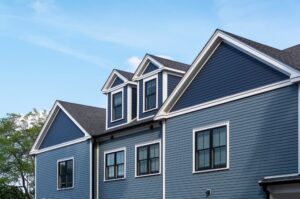
| Product Name | Use Case | Price Range | Features | Pros | Cons |
|---|---|---|---|---|---|
| CertainTeed Vinyl Siding | Affordable, low-maintenance | $2.50 – $7 per sq ft | Insulated, fade-resistant | Energy efficient, wide color range | Can fade and crack over time |
| James Hardie Fiber Cement Siding | Fire-resistant, durable | $6 – $13 per sq ft | Fire-resistant, versatile design | Long-lasting, low maintenance | High installation costs |
| LP SmartSide Wood Siding | Natural wood appeal, modern tech | $4 – $8 per sq ft | Termite-resistant, eco-friendly | Durable, customizable | Requires regular painting |
| Alside Prodigy Vinyl Siding | High-efficiency, low-maintenance | $4 – $8 per sq ft | Insulated, weather-resistant | Energy-efficient, durable | Limited color choices |
| Mastic Carvedwood 44 Vinyl Siding | Wood-look without maintenance | $2.50 – $6 per sq ft | Realistic wood grain, low-maint | Affordable, low maintenance | Limited style, may crack in weather |
How to Buy Siding: Your Step-by-Step Guide
Purchasing siding for your home is an exciting step towards enhancing its curb appeal and functionality. Whether you’re replacing old siding or installing it for the first time, the process can seem a bit overwhelming if you don’t know where to start. Don’t worry! This step-by-step guide will help you navigate through the buying process so that you get the best siding materials for your needs and budget.
Step 1: Choose Your Siding Material
The first thing you need to do is decide on the siding material that best suits your needs. Each type of siding has its own unique set of advantages and costs, so it’s essential to make the right choice based on the following:
Consider these factors:
- Climate: Is your area prone to extreme temperatures or humidity? If so, materials like fiber cement or metal may be a better choice due to their durability.
- Aesthetics: Do you prefer a natural look, or are you after something more modern? For example, wood siding offers a rustic charm, while vinyl siding gives a sleek, contemporary vibe.
- Budget: Be mindful of your budget. Materials like vinyl are generally more affordable, while stone or brick can be costly but offer long-term durability.
- Maintenance Needs: How much upkeep are you willing to do? Wood siding often requires repainting, whereas vinyl needs minimal maintenance.
Step 2: Measure Your Home’s Exterior
Before making any purchase, you’ll need to know how much siding you require. Measuring your home’s exterior is crucial for determining the total amount of material you’ll need. If you’re not familiar with how to measure, consider using an online calculator or hiring a professional.
How to measure:
- Measure the height and width of each wall of your home.
- Multiply the height by the width to get the square footage for each wall.
- Don’t forget to subtract areas like windows and doors, as they won’t require siding.
- Add up the square footage of all walls to get the total area that needs siding.
Once you have the total square footage, you can begin comparing prices and products.
Step 3: Set Your Budget
Siding can vary significantly in cost depending on the material and quality. It’s essential to establish a budget before making any decisions.
Factors to consider:
- Material cost: Some materials like vinyl siding are more affordable, while others like stone or brick can be quite expensive.
- Labor costs: If you’re hiring a professional to install the siding, this will significantly impact your budget. Labor costs typically make up about 30% of the total project cost.
- Additional costs: Don’t forget to factor in extra expenses like trim, insulation, and painting if needed.
Once you’ve set a budget, you can narrow down your options to those that fit within your price range.
Step 4: Research and Compare Products
Before making your purchase, it’s important to research various siding options and compare them based on price, quality, warranty, and reviews.
Key points to look for:
- Warranty: Check if the product comes with a warranty. Most manufacturers offer warranties of 20 years or more, but it varies by material.
- Energy Efficiency: Some sidings, like insulated vinyl, can improve your home’s energy efficiency, saving you money on utility bills.
- Durability: Research how the siding material holds up in various weather conditions and climates.
Example: If you’re considering vinyl siding, some popular brands to check out include CertainTeed or Mastic, both known for their durability and wide range of colors. For fiber cement, consider James Hardie, which is known for being fire-resistant and long-lasting.
Step 5: Where to Buy Siding
You have multiple options for where to buy your siding, and each comes with its own advantages.
Options include:
- Home Improvement Stores (e.g., Home Depot, Lowe’s, Menards)
- These stores offer a wide range of siding materials, as well as tools and accessories. They may also offer installation services.
- Pro Tip: Many stores offer bulk discounts if you’re purchasing a large quantity of siding.
- Online Retailers (e.g., Amazon, Wayfair)
- Buying siding online allows you to compare prices and read reviews from other customers. Some websites even offer free shipping or discounts for bulk orders.
- Pro Tip: Make sure to check the return policy, as siding is often a large investment.
- Specialty Siding Retailers (e.g., ABC Supply, SRS Distribution)
- These retailers specialize in siding and offer a larger selection of high-quality materials. They are great for homeowners who need advice and personalized service.
- Direct from Manufacturers (e.g., James Hardie, CertainTeed)
- Some manufacturers sell directly to consumers, which can help cut out the middleman. Purchasing directly often gives you access to exclusive deals and warranties.
Step 6: Order and Install the Siding
Once you’ve decided where to buy your siding and have placed your order, it’s time to move on to installation.
Options for installation:
- DIY Installation:
- If you have the necessary skills, you can install the siding yourself. Many manufacturers provide installation guides, and there are plenty of YouTube tutorials to help you along the way.
- Pro Tip: Make sure to carefully follow the manufacturer’s instructions for best results.
- Hire a Professional Installer:
- If you’re not comfortable installing the siding yourself, hire a licensed contractor who specializes in siding installation. They can ensure the job is done correctly and efficiently.
- Pro Tip: Always get multiple quotes and check reviews of contractors before making your decision.
Step 7: Enjoy Your New Siding!
Once your siding is installed, take the time to admire your home’s new look. Properly maintained siding not only enhances curb appeal but also adds value to your home. To keep your siding looking its best, follow maintenance recommendations, whether that’s washing, painting, or simply keeping it clear of debris.
Final Tips Before You Buy Siding:
- Take your time: Siding is a long-term investment. Don’t rush the process of choosing the material that’s best for you.
- Ask for recommendations: Talk to friends, family, or neighbors who’ve recently installed siding. Their firsthand experience can help guide your decision.
- Consider financing options: If the cost is too high upfront, check to see if the store offers payment plans or financing to help spread out the cost.
Frequently Asked Questions (FAQ)
1. How much does it cost to replace siding on a house?
The average cost to replace siding ranges from $5,000 to $15,000 depending on the material, size of the home, and labor costs.
2. How long does siding last?
Vinyl siding can last up to 40 years, while wood siding typically lasts around 20-30 years, depending on maintenance.
3. Can I install siding myself?
Yes, but it’s recommended to hire a professional for the best results, especially with materials like fiber cement or metal siding.
4. What’s the most affordable siding material?
Vinyl siding is typically the most affordable option.
5. Is fiber cement siding worth the price?
Yes, if you’re looking for durability and fire resistance, fiber cement siding can be a great investment, especially for areas prone to extreme weather.


